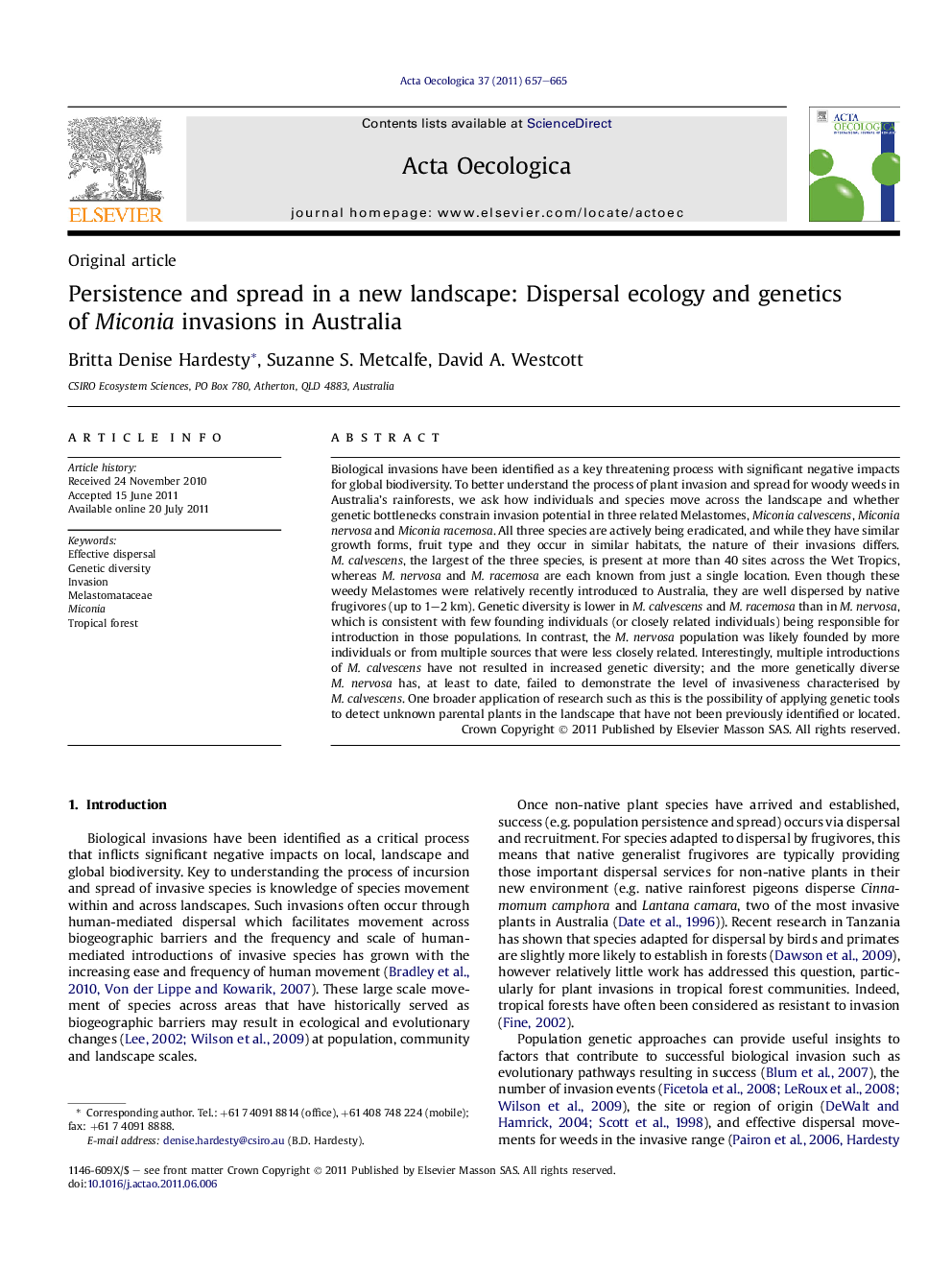| کد مقاله | کد نشریه | سال انتشار | مقاله انگلیسی | نسخه تمام متن |
|---|---|---|---|---|
| 4381357 | 1304067 | 2011 | 9 صفحه PDF | دانلود رایگان |

Biological invasions have been identified as a key threatening process with significant negative impacts for global biodiversity. To better understand the process of plant invasion and spread for woody weeds in Australia’s rainforests, we ask how individuals and species move across the landscape and whether genetic bottlenecks constrain invasion potential in three related Melastomes, Miconia calvescens, Miconia nervosa and Miconia racemosa. All three species are actively being eradicated, and while they have similar growth forms, fruit type and they occur in similar habitats, the nature of their invasions differs. M. calvescens, the largest of the three species, is present at more than 40 sites across the Wet Tropics, whereas M. nervosa and M. racemosa are each known from just a single location. Even though these weedy Melastomes were relatively recently introduced to Australia, they are well dispersed by native frugivores (up to 1–2 km). Genetic diversity is lower in M. calvescens and M. racemosa than in M. nervosa, which is consistent with few founding individuals (or closely related individuals) being responsible for introduction in those populations. In contrast, the M. nervosa population was likely founded by more individuals or from multiple sources that were less closely related. Interestingly, multiple introductions of M. calvescens have not resulted in increased genetic diversity; and the more genetically diverse M. nervosa has, at least to date, failed to demonstrate the level of invasiveness characterised by M. calvescens. One broader application of research such as this is the possibility of applying genetic tools to detect unknown parental plants in the landscape that have not been previously identified or located.
► Key to understanding the invasion process is knowledge of movements within and among landscapes.
► Traditional and genetic approaches combined can provide useful insights to understand invasion.
► Native frugivores effectively disperse novel plant species.
► For weedy Melastomes in Australia, genetic diversity and inbreeding do not impede invasion success.
Journal: Acta Oecologica - Volume 37, Issue 6, November–December 2011, Pages 657–665